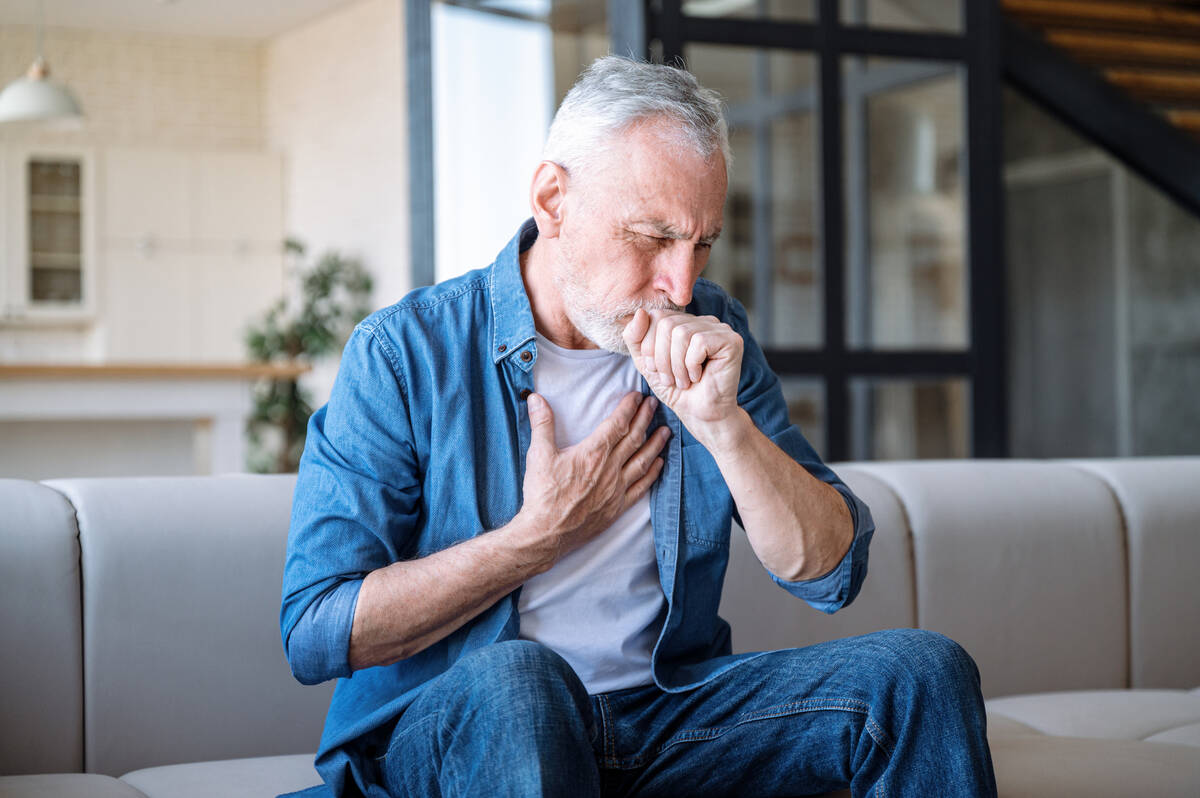These early signs of lung cancer are often missed, oncologists say
Lung cancer is the second-leading cause of cancer death in the United States after skin cancer, according to the American Cancer Society. The disease is to blame for about 1 in 5 cancer deaths, and the ACS estimates more than 125,000 people will die from it this year.
These statistics are grim, but there’s a reason why lung cancer often progresses past the point where it’s treatable: Early signs of lung cancer are often missed (or nonexistent).
“Most patients may not have symptoms unless it has spread or unless there is evidence it is metastatic or there is involvement of major structures,” says Dr. Amna Sher, a medical oncologist at Stony Brook Cancer Center.
Early diagnosis can significantly improve a person’s chances of survival. For instance, the five-year survival rate for the most common type of lung cancer, non-small cell lung cancer, which includes adenocarcinoma, squamous cell carcinoma and large cell carcinoma, is 65 percent if diagnosed while it’s still localized (in other words, it hasn’t spread elsewhere in the body).
Those numbers drop to 37 percent if it spreads to structures near the lungs, like the lymph nodes, and just 9 percent if it spreads to more distant areas of the body, such as the brain.
It’s a lot to take in. But the bottom line is this: “If lung cancer can be diagnosed at an early stage, the patient will have more treatment options and a better chance of remission,” says Dr. Xiuning Le, a V Foundation clinical scholar at the University of Texas’ MD Anderson Cancer Center. “It is extremely important to detect lung cancer as early as possible.”
But how? Doctors shared commonly missed early signs of lung cancer and what to do if you’re concerned.
Commonly missed sign
A persistent or worsening cough is a commonly missed early sign of lung cancer, Sher says.
“It warrants an evaluation if someone has a new or persistent cough … which has been ongoing for several weeks or months, especially in a high-risk patient with a strong history of smoking,” she says. “For example, you got a course of antibiotics, but it’s been two months, and you’re still coughing — seek medical attention.”
Sher says doctors often see patients come in with months of a persistent cough, but an abnormal X-ray prompts a deeper dive into the cause of the issue.
Easy to dismiss
Le and another expert agree that a chronic cough is an easy-to-miss sign of lung cancer. Part of the problem: Chronic coughs are often similar to other diseases, including those at a higher risk for lung cancer — primarily smokers — may already have.
“Most — but not all — cases of lung cancer are associated with a prior tobacco smoking history,” says Dr. Brett Bade, the director of the Lung Cancer Screening Program at Northwell Lung Insitute in New York. “Tobacco smoking is a risk factor for both lung cancer and lung disease. Chronic obstructive pulmonary disease, for example, can also cause a chronic cough and shortness of breath. People may attribute their symptoms to their lung disease or prior tobacco use.”
In other words, patients may be used to coughing and consider it normal.
Even people without a history of smoking or lung disease may chalk a persistent cough up to something else, and usually, something less severe.
“Patients may think it’s just an upper respiratory infection or virus,” Sher says. “It may be seasonal. Patients have allergies. If you’re around patients with kids, you’re exposed to all these viruses and may think you just didn’t get better.”
Other overlooked signs
A persistent cough isn’t the only early sign of lung cancer that’s easy to overlook.
“Since the lungs don’t have many pain receptors, most symptoms of lung cancer are related to the tumor’s involvement of a local structure or another organ,” Bade says. “For example … shortness of breath may develop if the tumor involves the airway. Similarly, if the tumor spreads to a bone, the involved bone becomes painful.”
Bade says that other common signs of lung cancer a patient may not recognize include: fatigue, hoarseness, chest pain, bone pain, reduced appetite and weight loss.
Diagnosis, treatment
Doctors will biopsy the involved site to diagnose lung cancer.
“Frequent biopsy sites include the lungs, lymph nodes in the neck or chest or drainage of fluid from around the lungs,” Bade explains. “If other organs are involved, your doctor may recommend a biopsy of those sites; examples might include the liver, the adrenal gland or a bone.”
Le says that several factors determine a patient’s lung cancer treatment plan, mainly: the type of lung cancer, the cancer’s stage, and genetic and immunological features of the specific patient.
“In general, surgery, radiation and systemic therapies are all effective treatments for lung cancer,” Le says. “There are many different options within the (therapy) class.”
A care team will work with a patient on the best option for their specific case.
If you’re concerned about lung cancer, talk to your doctor.
“Early recognition and early treatment is the key to longer lung cancer survival,” Le says. “If you have new symptoms or suspect you are eligible for lung cancer screening, you should discuss it with your doctor.”


















